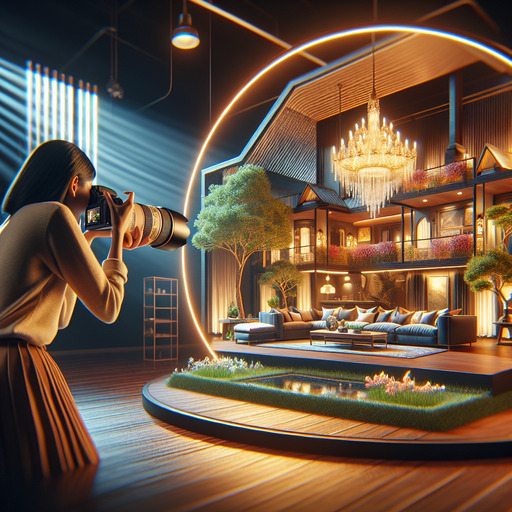
-
Table of Contents
Discover the Best Lenses for Real Estate Photography in 2024 and elevate your property listings today! Learn More
Introduction
In the dynamic world of real estate photography, capturing the essence and allure of properties is paramount. As we step into 2024, the demand for high-quality, visually compelling real estate images continues to rise, making the choice of lenses more critical than ever. The best lenses for real estate photography in 2024 are those that offer exceptional sharpness, wide-angle capabilities, and versatility to handle various lighting conditions and architectural details. From prime lenses that deliver unparalleled clarity to zoom lenses that provide flexibility in framing, the market is brimming with options tailored to meet the needs of professional photographers. This guide delves into the top lenses that promise to elevate real estate photography, ensuring every shot is a true representation of the property’s potential.
Best Lenses For Real Estate Photography In 2024: Top Picks And Tips For Stunning Property Photos
When it comes to capturing stunning property photos, the right lens can make all the difference. In 2024, advancements in lens technology have provided real estate photographers with an array of options that cater to various needs and preferences. Selecting the best lens for real estate photography involves considering factors such as focal length, aperture, and image stabilization. To help you make an informed decision, we have compiled a list of top picks and essential tips for achieving breathtaking real estate images.
One of the most critical aspects of real estate photography is the ability to capture wide-angle shots. Wide-angle lenses are indispensable for showcasing the full scope of a property, making rooms appear more spacious and inviting. Among the top contenders in this category is the Canon RF 15-35mm f/2.8L IS USM lens. This lens offers a versatile focal length range, allowing photographers to capture both expansive interiors and detailed architectural elements. Its constant f/2.8 aperture ensures excellent low-light performance, while the built-in image stabilization minimizes camera shake, resulting in sharp, clear images.
Similarly, the Nikon Z 14-30mm f/4 S lens is another excellent choice for real estate photographers using Nikon’s mirrorless system. This lens boasts a compact design and a wide focal length range, making it ideal for capturing everything from tight spaces to grand exteriors. The f/4 aperture, while not as fast as some other options, still provides ample light for most real estate scenarios, and the lens’s superior optical quality ensures minimal distortion and edge-to-edge sharpness.
Transitioning to another essential lens type, tilt-shift lenses are invaluable for correcting perspective distortion, a common issue in architectural photography. The Canon TS-E 17mm f/4L is a standout in this category, offering exceptional control over perspective and depth of field. This lens allows photographers to achieve perfectly straight lines, which is crucial for professional-looking real estate images. Although tilt-shift lenses require a bit more skill to use effectively, the results can be well worth the effort.
For those who prefer a more budget-friendly option, the Sigma 10-20mm f/3.5 EX DC HSM lens is a fantastic alternative. Compatible with both Canon and Nikon DSLRs, this lens provides a wide-angle perspective at a fraction of the cost of some high-end models. Its constant f/3.5 aperture and fast autofocus make it a reliable choice for capturing crisp, vibrant property photos.
In addition to selecting the right lens, there are several tips that can enhance your real estate photography. First, always use a tripod to ensure stability and reduce the risk of blurry images. This is especially important when shooting in low light or using slower shutter speeds. Second, pay attention to lighting; natural light is often the most flattering, so schedule your shoots during the day when possible. If additional lighting is needed, consider using softboxes or diffusers to create even, diffused light that minimizes harsh shadows.
Furthermore, composition plays a crucial role in real estate photography. Aim to capture images from a height of about five feet to provide a natural perspective. Additionally, use leading lines and symmetry to guide the viewer’s eye through the space, creating a sense of flow and harmony.
In conclusion, the best lenses for real estate photography in 2024 offer a combination of wide-angle capabilities, perspective control, and high optical quality. By investing in lenses such as the Canon RF 15-35mm f/2.8L IS USM, Nikon Z 14-30mm f/4 S, or Canon TS-E 17mm f/4L, and following essential photography tips, you can elevate your property photos to a professional level, making them more appealing to potential buyers and clients.
Q&A
1. **What are the best lenses for real estate photography in 2024?**
– **Canon RF 15-35mm f/2.8L IS USM**: Known for its wide-angle capabilities and image stabilization.
– **Nikon Z 14-30mm f/4 S**: Offers a versatile focal range and excellent sharpness.
– **Sony FE 12-24mm f/2.8 GM**: Provides ultra-wide-angle coverage with high image quality.
– **Sigma 14-24mm f/2.8 DG HSM Art**: Compatible with multiple mounts, known for its sharpness and build quality.
– **Tamron 17-28mm f/2.8 Di III RXD**: A budget-friendly option for Sony E-mount with good performance.